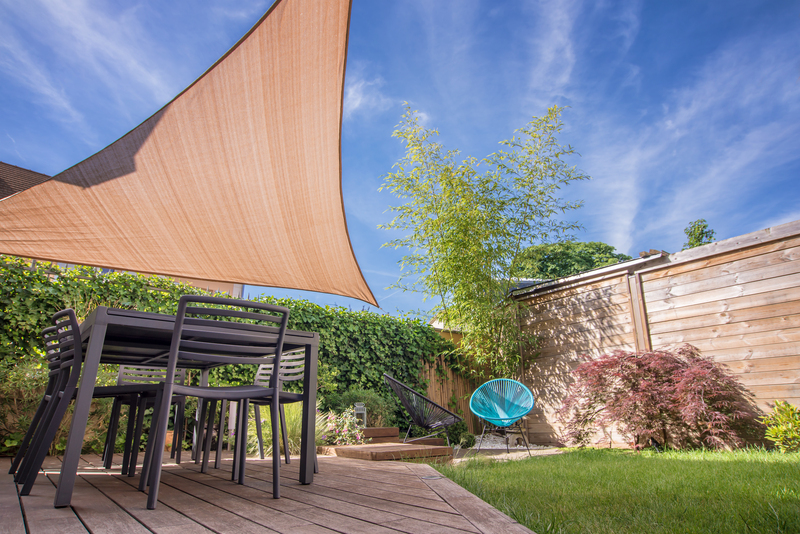Hone hedge trimming techniques for striking designs
Posted on 21/06/2025
Hone Hedge Trimming Techniques for Striking Designs
Maintaining hedges is more than an act of garden maintenance; it is a living art form capable of transforming the aesthetic of outdoor spaces. With the right hedge trimming techniques, homeowners and landscaping enthusiasts can elevate their gardens to new heights of beauty and sophistication. In this comprehensive guide, we explore professional ways to hone hedge trimming techniques and create striking designs that captivate and impress. Whether you dream of crisp geometric lines, whimsical topiary, or lush privacy screens, mastering the art of hedge shaping will unlock a new echelon of garden design.
Understanding the Art of Hedge Trimming
HEDGE trimming is as much about precision and vision as it is about shears and hedges. At its core, the process involves cutting and shaping shrubs and bushes to maintain both plant health and aesthetic appeal. However, to hone your hedge trimming techniques for truly striking designs, you must understand the principles of design, plant biology, and the best tools for the job.
Why Shape Matters in Hedge Design
- Visual Impact: Well-shaped hedges become focal points, drawing eyes and creating structure in garden layouts.
- Functional Benefit: Strategic designs can provide privacy, windbreaks, or direct garden flow.
- Plant Health: Trimming techniques influence air flow, light access, and overall vitality of your hedges.
Essential Tools to Hone Your Hedge Trimming Techniques
A craftsman is only as good as their tools. For the best results in creating striking hedge designs, start with the right equipment:
- Manual Hedge Shears: Provide control for detail work and shaping.
- Powered Hedge Trimmers: Ideal for quick cuts and uniform lines, especially on long hedgerows.
- Loppers: For thicker branches that shears might not handle.
- Pruning Saws: Helpful for older, woodier growth within the hedge.
- String and Stakes: Useful for achieving straight, level cuts.
- Protective Gear: Gloves, goggles, and sturdy clothing for safety.
Regular cleaning and sharpening of your blades are crucial to avoid ragged cuts, which invite pests and disease and spoil the shape of your hedge.

Top Techniques to Hone for Striking Hedge Designs
Bringing artistry to hedge trimming requires a foundational understanding of several hedge trimming techniques that produce professional, eye-catching results.
1. The Basics of Hedge Trimming
- Start at the Top: Begin by trimming the top of your hedge, so clippings fall onto areas you will trim later.
- Work Downward: Move down the sides, cutting in smooth, sweeping motions for an even finish.
- Keep it Tapered: The base should be wider than the top. This battered shape allows sunlight to reach lower branches, promoting denser growth.
2. Double-Cut for Precise Shapes
To achieve striking hedge shapes, consider using the double-cut method. First, roughly shape the hedge, then go back for a second, finer trim to perfect the lines. This technique is essential for geometric designs such as cubes, rectangles, or elaborate topiary forms.
3. String-Line Trick for Straight Edges
When precision is paramount, use a taut string stretched between stakes as your guide. Cut just above or below the string (depending on your dominant hand), ensuring each pass of your trimmer creates a sharp, professional edge.
4. Scaffolding Cuts for Topiary and Detailed Designs
For complex shapes such as spirals, balls, or animals, mark key areas with stakes or place a wire frame over the hedge. Begin by roughing out the primary form, then make incremental shallow cuts as you build towards the finished shape. Always step back frequently to admire your work and verify symmetry.
5. Gradual Shaping Over Time
Ambitious hedge designs require patience. Over-pruning in one session may harm the plant. Instead, shape the design over several seasons, encouraging new growth where needed to fill lines and soften curves.
Creating Striking Designs: Inspiration and Best Practices
Now that you understand the essential techniques, let's explore how to use your honed hedge trimming skills to craft unique, striking hedge designs that make your garden unforgettable.
Popular Hedge Designs and How to Achieve Them
- Classic Box Hedge: Achieve this timeless look with careful use of string lines to ensure uniform sides and top. Maintain a slightly bevelled profile to keep the base wider.
- Wave Pattern: Mark peaks and troughs with flags or ties, then trim gentle, undulating curves along the top of the hedge for a dynamic, modern aesthetic.
- Topiary Spheres or Spirals: Use a wire cage to guide clippers in forming perfect spheres or winding spirals. Clip frequently to maintain tight lines.
- Cloud Pruning (Niwaki): Inspired by Japanese garden artistry, sculpt individual cloud-like shapes into your hedge for ethereal garden character.
- Architectural Frames: Cut 'windows' or archways into larger hedges for visual interest and to frame garden paths or views.
Hedge Trimming Frequency for Optimal Shape
- Evergreen Hedges: Trim two to three times during the growing season (early spring, mid-summer, and late summer).
- Deciduous Hedges: Typically trimmed after flowering or once in late summer.
- Topiary: Requires more frequent trims to maintain crisp shapes; every four to six weeks in the active growing season.
Regular trimming encourages fuller, denser growth and maintains the integrity of complex designs.
Advanced Tips to Perfect Your Hedge Trimming Design Skills
Once you've mastered the basics, you can employ advanced methods to further hone your hedge trimming techniques for even more striking results:
- Use Templates: For intricate designs, cardboard, plywood, or plastic templates are invaluable for consistency.
- Level Tools and Laser Guides: For professional straight hedges, use a spirit level or laser line for reference.
- Mixed Plantings: Combine different hedge species in a single design to add color contrasts or textural layers.
- Lighting: Illuminate dramatic hedge shapes with garden lighting to accentuate depth and form at night.
- Consider Growth Rates: Fast-growing species may require more frequent trimming but can be shaped quickly for dramatic changes.
Caring for Hedges After Trimming
Healthy hedges are the canvas for all striking hedge designs. After every trim, support recovery and encourage lush regrowth by:
- Watering thoroughly if conditions are dry after trimming.
- Mulching to retain moisture and provide gentle nutrients.
- Feeding with a balanced fertilizer, especially after heavy trims.
- Inspecting for signs of disease or infestation.
- Cleaning tools after each use to prevent spreading plant disease.
Choosing the Right Hedge Species for Innovative Trimming
Not all hedges trim equally well. To hone hedge trimming techniques for striking designs, select plant varieties that respond well to shaping:
- Boxwood (Buxus): Compact growth and small leaves make them ideal for precise, formal designs.
- Yew (Taxus): Tolerates harsh cuts and develops dense, evergreen foliage for topiary and traditional shapes.
- Privet (Ligustrum): Quick to establish and easy to shape multiple times a year.
- Holly (Ilex): Shiny leaves and slow, controlled growth suit intricate forms.
- Beech or Hornbeam: For looser, undulating or cloud-like designs that hold leaves through winter.
Common Hedge Trimming Mistakes to Avoid
Even experienced gardeners are prone to errors when trimming hedges for design. Sidestep these frequent pitfalls:
- Narrowing the Base: Causes shade and thinning at lower branches.
- Cutting During Frost or Heat Waves: Leads to stress and browning of foliage.
- Over-pruning: Reduces photosynthetic ability and weakens the plant.
- Uneven Pressure: Creates wavy or slanted lines unintentionally.
- Neglecting Sharp Tools: Chews rather than cuts branches for a ragged appearance and plant injury.

Seasonal Considerations for Striking Hedge Designs
Choosing the right time to trim is vital. For hone hedge trimming techniques that produce striking designs year-round:
- Late Winter/Early Spring: Best for most formative trimming--plants are dormant, and there's less risk of disease.
- Summer: Ideal for maintaining existing shapes and cleaning up after flowering.
- Avoid Fall: New growth may not harden before frost, causing dieback.
Conclusion: Transform Your Garden With Expert Hedge Trimming
Mastering hedge trimming is a journey that balances horticultural science and creative flair. By applying these honed hedge trimming techniques and embracing innovative design approaches, you'll craft outdoor spaces that are both practical and stunningly beautiful. Whether your goal is a lush privacy screen, statement topiary, or crisp, formal boundaries, remember that patience and regular maintenance are key to long-term success.
So, sharpen your shears, sketch your designs, and unlock the true potential of your green boundaries. Your garden--transformed with expert hedge trimming techniques--will be a living work of art that delights through every season.

